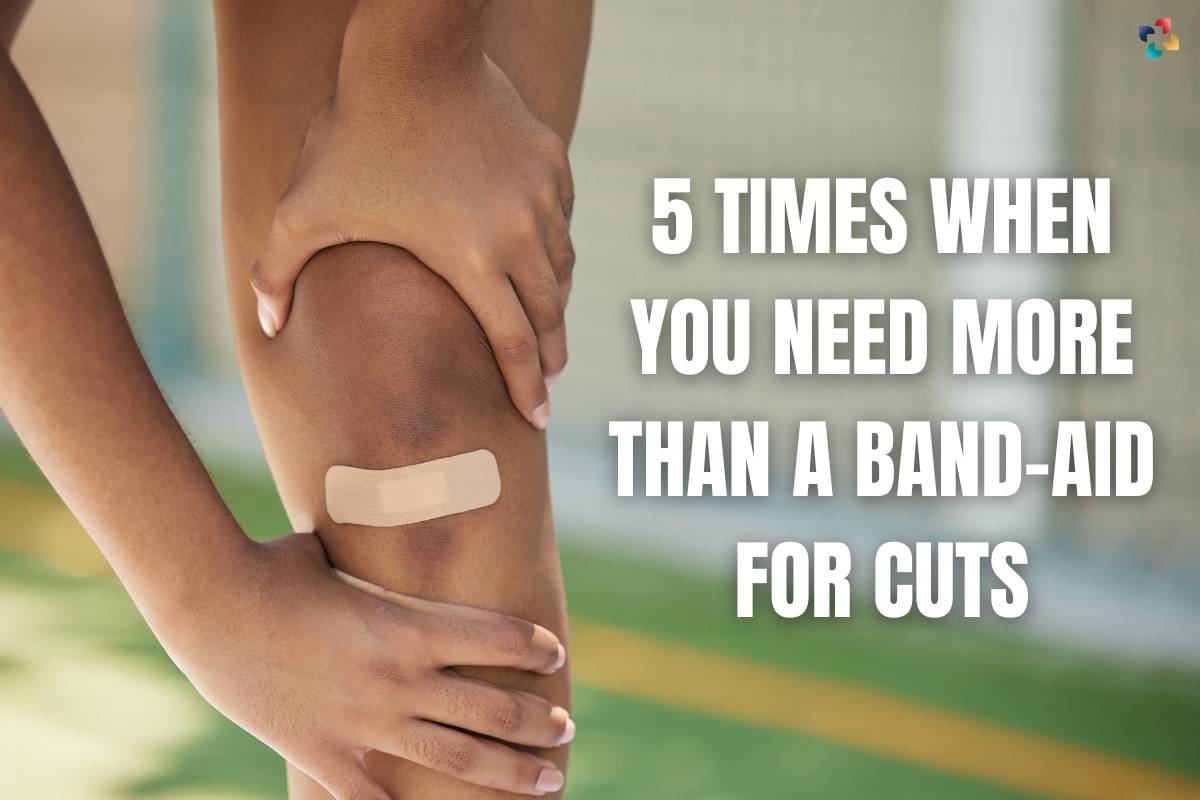Band-aid is the primary first-aid that comes to mind when suffering from a cut. Accidents and cuts come uninvited, and the next step is to put a band-aid on the cut or bruise. Using a band-aid for cuts is the most common practice in households. A band-aid prevents the wound to get exposed to external infections and is a primary cure to stop the wound from worsening.
In all households, a band-aid is inevitably kept for emergency cases. Cuts through knives, burns while cooking, or bathing, and children falling while they play are common scenarios in our homes for which band-aids are the priority. Depending on the intensity of the wound we decide whether the injured person needs more than a band-aid for cuts. Wondering how to decide that? Let’s find out
Here are 5 Times When You Need More than a Band-Aid for Cuts:
1. Deep and Wide Cuts
Not all cuts are created equal. In cases of deep and wide cuts, a standard Band-Aid might fall short of providing the necessary protection. Using a band-aid for cuts cannot be the ideal situation each time. These types of wounds can expose underlying tissues, blood vessels, and nerves, making them susceptible to infection and more challenging to heal. Using a bandage instead of just a Band-Aid allows for better coverage and compression, reducing the risk of wound re-opening and aiding in the formation of a stronger scab. Moreover, a bandage can accommodate sterile dressings and absorbent pads to keep the wound clean and aid in the healing process.
2. Wounds Requiring Sutures

When a cut is particularly deep or jagged, it may require stitches or sutures to properly close the wound and promote optimal healing. In such cases, a Band-Aid is insufficient to hold the wound edges together securely. Failure to complete the wound appropriately can lead to delayed healing and an increased risk of infection. Sutures provide proper wound approximation, preventing the formation of excessive scar tissue and reducing the chances of bacterial infiltration.
3. Wounds in High-Friction Areas
Areas of the body that are subject to constant movement and friction, such as joints and the hands, demand more than just a Band-Aid to stay protected. Using a bandage that offers additional adhesive support and coverage can prevent the Band-Aid from constantly shifting or falling off due to movement. This is crucial as repeated friction can lead to the premature removal of the Band-Aid, leaving the wound exposed and vulnerable to infection. Making use of a band-aid for cuts in friction areas will not fully cover the damage and may come off due to the constant friction faced.
4. Risk of Infection
While Band-Aids are designed to provide a barrier against bacteria and debris, they are not foolproof. In cases of cuts that are particularly prone to infection, such as those obtained in outdoor or unsanitary environments, relying solely on a Band-Aid might not be sufficient. A band-aid for cuts that cause infection will not provide enough cover for the wound. A bandage, combined with antiseptic ointments, can provide an added layer of protection against potential pathogens, reducing the likelihood of infection.
5. Wounds with Excessive Bleeding
In situations where the cut is bleeding profusely, applying only a Band-Aid might not effectively control the bleeding. A bandage with an absorbent pad can help manage bleeding by applying gentle pressure to the wound. Properly controlling the bleeding not only promotes clot formation but also aids in preventing infection by reducing the exposure of the wound to external contaminants.
The Harm of Insufficient Wound Care
Using only a Band-Aid for cuts, especially in the aforementioned situations, can have several negative consequences. Firstly, inadequate protection can lead to the reopening of the wound, delaying the healing process and increasing the risk of scarring. Secondly, an exposed wound is more susceptible to bacteria, which can lead to infections. Bacterial infections can range from mild skin irritations to severe systemic infections that require medical intervention. Moreover, infection delays healing and can leave lasting scars on the skin.

When a wound is not properly covered and protected, it is also more susceptible to environmental factors such as dirt, dust, and moisture. These factors can introduce foreign particles into the wound, increasing the risk of complications. Additionally, the adhesive used in Band-Aids might not be strong enough to withstand movement in certain areas of the body, leading to frequent dislodgment of the Band-Aid and compromising the wound’s protection.
Potential Infections and Complications
By relying solely on a Band-Aid for cuts in situations that demand more comprehensive wound care, the risk of various infections and complications significantly increases.
- Cellulitis:
This bacterial skin infection can occur when bacteria enter the body through a cut and spread into the surrounding tissues. It leads to redness, swelling, warmth, and pain in the affected area. Using band-aid for cuts that cause infection, will worsen the wound and cause an increase in the disease.
- Abscess Formation:
An abscess is a pocket of pus that forms when the body’s immune system responds to infection. It can be painful and may require drainage and antibiotic treatment. Only the use of a band-aid for cuts won’t be enough to heal the abscess.
- Tetanus:

Deep cuts or wounds that are exposed to dirt and bacteria can increase the risk of tetanus, a potentially serious bacterial infection that affects the nervous system. You need to be injected with the tetanus shot by a doctor, to avoid the bacterial infection.
- Delayed Healing:
Without proper wound care, the healing process can be delayed, leading to prolonged discomfort and potential complications.
Conclusion:
While Band-Aids are valuable tools for minor cuts, they are not a one-size-fits-all solution. In situations involving deep cuts, wounds requiring sutures, high-friction areas, risk of infection, and excessive bleeding, a more comprehensive approach using a bandage is necessary.
Neglecting proper wound care can lead to various complications, ranging from infections to delayed healing. By understanding the limitations of a Band-Aid and recognizing when to opt for more advanced wound care methods, you can ensure better healing outcomes and reduce the risk of complications. Remember, the next time you face a cut that goes beyond the superficial, it’s important to go beyond a Band-Aid for the sake of your health and well-being.
Also Read: 5 Best First-aid Tips for Pet Owners







